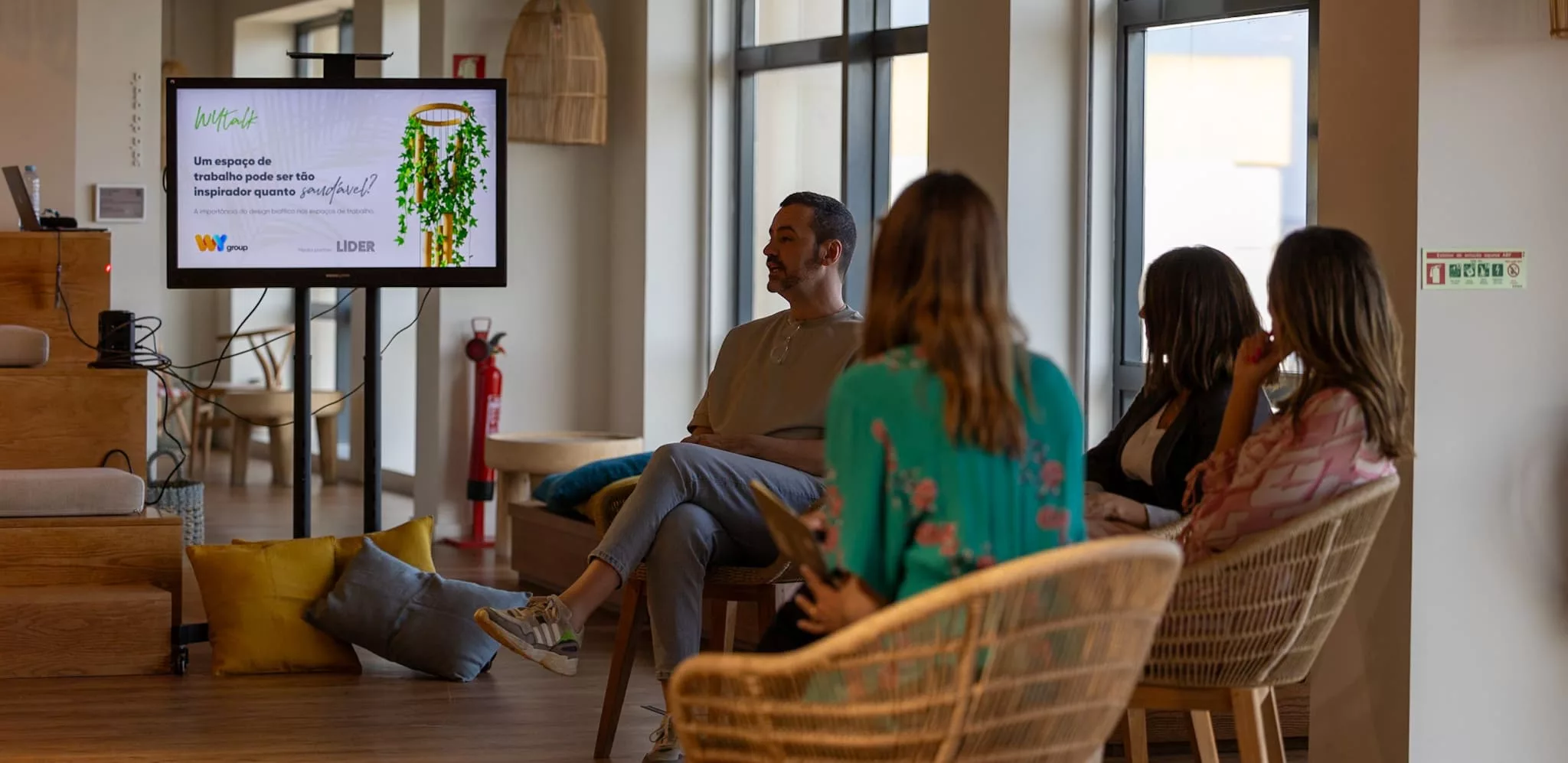The needs and desires of workers have changed significantly, and the same goes for workplaces. Large rooms, desks, computers, and white lights seem to be things of the past. So, what are the characteristics of the offices of the future?
This question was the focus of the WYtalk “Can a Workplace Be as Inspiring as It Is Healthy?” which emphasized the importance of biophilic design in workspaces. The event took place on June 5th at Casa da Praia (WYgroup) and featured a debate among Inês Simões, Director of Corporate Communication, Brand and Organizational Culture at Grupo Ageas Portugal, Marta Silva Carvalho, Head of Marketing & Communications at JLL, and Nuno Matos Cabral, Head of Creativity at Gato Preto, moderated by Filipa Montalvão, Founding Partner at White.
According to Nuno Matos Cabral, biophilic design “is not an exact science but has rules” and is essentially “a symbiosis between humans and nature.” As workers spend more time indoors, it’s necessary to “bring the environment” into these spaces.
“At the start of the century, there was a focus on the individual, creating spaces with more light, clarity, efficiency, and comfort,” he explained. The pandemic heightened the need for more comfortable offices to attract workers back, reviving the concept of biophilic design. Since then, workers’ needs have continued to evolve.
Requirements for the Offices of the Future
Marta Silva Carvalho mentioned that 90% of workers consider flexibility their top priority, with 60% refusing to work for a company that isn’t flexible, according to a JLL study.
The main requirement for new offices is having video meeting rooms and “spaces that communicate with each other.” “Our projects already include biophilic design elements,” she added.
Nuno Matos Cabral elaborated on several requirements for implementing this philosophy, such as incorporating “large glazed surfaces to minimize the use of electrical energy and prioritize solar energy” and having many “windows to allow air circulation” to avoid air conditioning. Plants should not only be decorative but also include species that “help cool or purify the workspace.”
The use of natural materials is another pillar of this philosophy, preferring “woods, corks, sands, clays, and muds” with a focus on sustainability.
Despite these efforts, bringing workers back to the office has been more challenging than expected. Inês Simões emphasized the need to adapt spaces to meet new employee needs, “to make the building feel almost like an extension of their lives rather than just a place with desks.”
“We aim to bring life to these spaces so that people are motivated to come in, creating a stage for more creativity, collaboration, and physical and mental well-being,” she added.
In summary, this WYtalk offered insights into the importance of workplaces for team well-being and productivity. Concepts like biophilic design and other innovations are transforming future offices, which must continuously adapt to the evolving needs of workers.
This article was originally published in LIDER magazine.
